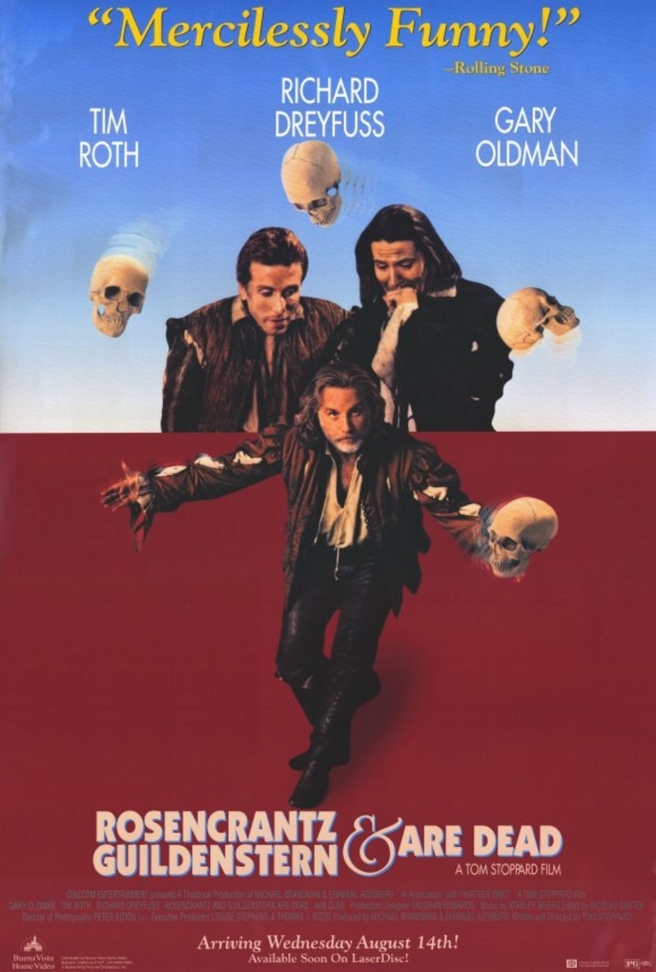7 March: North Park Theatre: Shakespeare in Love (1998)
29 March: Amherst Dipson Theater: Ran (1985)
Month of May: Buffalo and Erie County Public Library Thursday Film Series
3-9 June and 18 October: North Park Theatre and Amherst Dipson Theater: Chimes at Midnight (1965)
UB Libraries: Shakespeare Behind Bars (2005)
UB Libraries: Still Dreaming (2014)
Shakespeare in Love (1998)
7 March 2016 @ 7pm
North Park Theatre, 1428 Hertel Ave, Buffalo
Introduced by Barbara Bono
Click here for Shakespeare in Love notes

Young Will Shakespeare is the up and coming playwright of the time, but has been disastrously struck by the bane of the writer’s life – writer’s block. His comedy “Romeo and Ethel, the Pirate’s Daughter” isn’t going anywhere and the playhouse is under threat of closure. What Will needs is a muse, and she appears in the form of the beautiful and bethrothed Lady Viola. The path of true love does not run smooth for Will, but the joys and tragedy of his own life find their way onto the page in a moving, witty and spellbinding tale. (miramax.com)
2 hr. 17 mins. Rated R.
Ran (Chaos, 1985)
29 March 2016 @ 7pm
Amherst Dipson Theater, 3500 Main Street, Buffalo
An offering of the spring 2016 Buffalo Film Seminars, introduced by Diane Christian and Bruce Jackson

Legendary director Akira Kurosawa reimagines Shakespeare’s King Lear as a singular historical epic set in sixteenth-century Japan. Majestic in scope, the film is Kurosawa’s late-life masterpiece, a profound examination of the folly of war and the crumbling of one family under the weight of betrayal, greed, and the insatiable thirst for power. (criterion.com)
2 hr. 40 mins. Rated R.
Buffalo and Erie County Public Library Thursday Film Series:
Celebrate Shakespeare
1 Lafayette Square, The Ring of Knowledge, 5-7 pm
Free and open to the public
 5 May: Hamlet (1990), directed by Franco Zeffirelli and starring Mel Gibson as Hamlet, Alan Bates as Claudius, Glenn Close as Gertrude, and Helena Bonham Carter as Ophelia.
5 May: Hamlet (1990), directed by Franco Zeffirelli and starring Mel Gibson as Hamlet, Alan Bates as Claudius, Glenn Close as Gertrude, and Helena Bonham Carter as Ophelia.  .
.
12 May: Gnomeo & Juliet (2011), British-American 3D computer-animated family film based on William Shakespeare’s play Romeo and Juliet, written and directed by Kelly Asbury, with Gnomeo voiced by James McAvoy, and Juliet voiced by Emily Blunt.
 19 May: She’s the Man (2006), an American romantic comedy directed by Andy Fickman , inspired by William Shakespeare’s play Twelfth Night, and starring Amanda Bynes, Channing Tatum, Laura Ramsey, and Vinnie Jones.
19 May: She’s the Man (2006), an American romantic comedy directed by Andy Fickman , inspired by William Shakespeare’s play Twelfth Night, and starring Amanda Bynes, Channing Tatum, Laura Ramsey, and Vinnie Jones.
26 May: Rosencrantz & Guildenstern Are Dead (1990), a comedy-drama written and directed by Tom Stoppard and based on his play of the same name. Two minor characters from Shakespeare’s Hamlet find themselves on the road to Elsinor Castle at the behest of the King of Denmark, and, Beckett-like, ponder the meaning of their existence. Starring Tom Roth as Guildenstern, Gary Oldman as Rosencrantz, and Richard Dreyfuss as the Player King, the film won the Golden Lion at the 47th Venice International Film Festival.
 Chimes at Midnight (1965)
Chimes at Midnight (1965)
3-9 June, 2016 @ 2 and 4;45 pm
North Park Theatre, 1428 Hertel Ave, Buffalo
Click here for Chimes at Midnight program notes
18 October 2016 @ 7pm
Amherst Dipson Theater, 3500 Main Street, Buffalo
An offering of the spring 2016 Buffalo
Film Seminars, introduced by Diane Christian and Bruce Jackson
Happy day! Many cinephiles have longed for a definitive release of Chimes at Midnight, Orson Welles’ favorite of his films. “If I wanted to get into heaven on the basis of one movie,” he once said, “that’s the one I would offer up.”
After Distribpix Inc.’s Steven Morowitz and filmmaker Joel Bender unearthed a 35mm print of Orson Welles’ 1965 Shakespearean classic—after decades when the film was unseeable—there was hope that it would soon hit theaters. Now there is a definitive restoration from Janus Films, which took 20 years, but not from this source. Janus will present Chimes at Midnight in an exclusive engagement at New York’s Film Forum and L.A.’s Cinefamily starting January 1, with a rollout to select U.S. cities to follow.
The part Orson Welles was really born to play wasn’t Charles Foster Kane, nor the candy-addicted Hank Quinlan, or Harry Lime, or Cardinal Wolsey. It was a character who first appeared 418 years ago, who ducks in and out of several plays contributing bon mots and bad behavior; a wit, a lout, a drunk, a fool, and a character whom Welles called the “the most completely good man in all drama.”
Shakespeare never gave him his own play, so Welles – with typical Wellesian audacity – made one for him.
Chimes at Midnight, the film Welles seemed most proud of, stars its director as Sir John Falstaff, the comic character whom Shakespeare introduced in Henry IV, parts I and II, who makes an appearance, too, in The Merry Wives of Windsor, and in a movie — first released in 1966 and unavailable for decades – that also references Richard II and Henry V. But it is Falstaff – corpulent, conniving, merry, muddled and a well of humanity —who dominates, even as his fellow debauchee, the young Prince Hal (Keith Baxter) approaches his date with destiny, history and power.
Tweaking English literature with the same brio by which he revolutionized American cinema, Welles pays his due respect to Bard, but also shows what Shakespeare might have done, if he’d only had a movie camera. (John Anderson and Matt Brennan, Thompson on Hollywood, December 15, 2015)
1 hr. 59 mins.
Shakespeare Behind Bars (documentary, 2005)
Available through the UB Libraries at http://catalog.lib.buffalo.edu/vufind/Record/003226617
\
Take Shakespeare’s final play The Tempest with its violent seas, windswept island, crucial connection to nature, and underlying theme of forgiveness, and bring it into a prison, the ultimate venue of confinement. The result is an extraordinary story about the creative process and the power of art to heal and redeem–in a place where the very act of participation in theatre is a human triumph and a means of personal liberation.In Hank Rogerson’s revelatory trip into and around this prison production, we embark on a year-long journey with the Shakespeare Behind Bars theatre troupe. Led by director Curt Tofteland, whose innovative work with Luther Luckett inmates began in the mid-1990s, the prisoners cast themselves in roles reflecting their personal history and fate. Their individual stories, including information about their heinous crimes, are interwoven with the plot of The Tempest as the inmates delve deeply into the characters they portray while confronting their personal demons. (shakespearebehindbars.org)1 hr. 30 mins.
Still Dreaming (documentary, 2014)
Available through the UB Libraries

Stretching physical, emotional and mental limits, a group of elderly Broadway actors, musicians and dancers bravely dive into a production of A Midsummer Night’s Dream and find that nothing is what it seems to be. These former Broadway stars, who reside at the Lillian Booth Actors Home just outside New York City, embark on a journey through the magical play at the urging of the Home’s administrators. The staff of the Home sees this as an opportunity to boost quality of life for the residents. The residents are not so sure.
As the rehearsal process unfolds, the actors find themselves experiencing both the pain and exhilaration of re-immersion in their life’s work amidst the vagaries of old age. At the same time, the troupe’s young co-directors, Ben Steinfeld and Noah Brody of NYC’s celebrated Fiasco Theater, struggle to maintain forward momentum with this over-80 acting ensemble. Alzheimer’s, Dementia, and even minor issues such as sight and hearing loss create constant crises and obstacles for all involved. As the troupe pushes forward, the play’s themes of perception, reality vs. dreaming, and memory become relevant in sharp relief. Ultimately the performance of the play turns out to be surprising, mysterious and resonant, and a vital reminder of the value of engaging in our dreams no matter the circumstance. (stilldreamingmovie.com)
1 hr. 33 mins.

